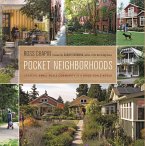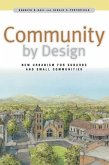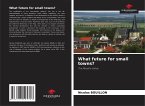With their various constraints and unique cultural traits Asian Cities offer a multitude of approaches and potential engagements in the urban terrain. This book is a series of up-gradation and intervention initiatives in Indian Cities that converge at a scale between urban design, architecture and landscape. It includes 9 projects and collaborations by NilaA Architecture and Urban Design, a design studio in New Delhi from 2010-2019. The projects range from small scale approaches in dense inner city conditions to urban resilience measures in urban riverfront revitalization. With simple diagrams, drawings and volumetric studies, the book provides compilation of various attributes of urban infill and strategy projects. Since many are civic funded projects like local municipality, World bank funded urban scheme, the projects strive to create a methodology of small scale change that aims to benefit a larger urban fabric through connections, access, pause and play. The book includes pedestrianisation scheme for Karol Bagh and Paharganj, a unique cultural precinct in Delhi and the completed urban initiative of a riverfront walkway along River Ganges at Patna, a revitalization project funded by the World Bank and the National Mission on Ganga. Re-looking at urban assets is a common parameter in the projects whether they include Re-use of defunct spaces and buildings along with a deep sense for Nature in the City. Severe weather patterns in Indian sub-continent had driven introspection in climate resilience based initiatives at Varanasi Riverfront, a Mumbai Nature Park proposal. Each urban initiative is supported by an implementation plan through an open framework of small scale architecture works that reinforce the larger urban vision. Efforts like Kutch Stone Community space has emerged from a larger initiative in the western most rural locale in Gujarat. The book also includes progress work of a research lab led by Nishant, at the urban design department called Element Lab. This elaborates a pedagogy of understanding and sensing the urban pressures of 5 key elements/ resources- air, water, food, greens and heat.







